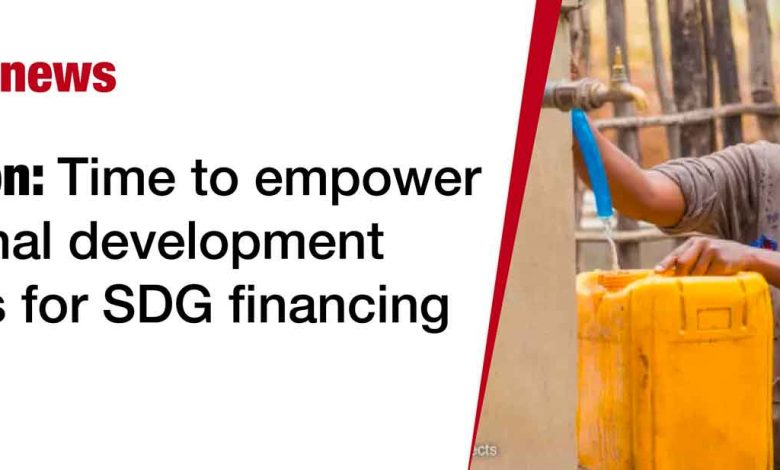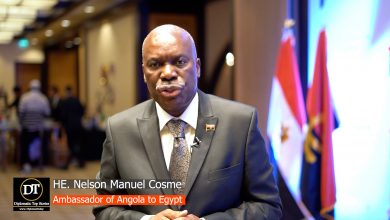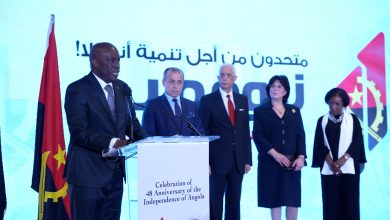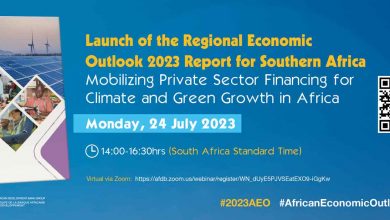Opinion: Time to enable regional development banks to fund SDG finance | African Development Bank

Diplomat.Today
The African Development Bank
2022-11-18 00:00:00
——————————————-
Russia’s war in Ukraine raises the cost of tackling climate change, inequality and other major development goals. While focusing on economic development support for low- and middle-income countries, major global development finance players such as the International Monetary Fund and the World Bank have so far been unable to address the climate crisis and social inequality with the flexibility and scale are required. Regional multilateral development banks could do that.
Even before COVID-19, LMICs struggled to raise the $2.5 trillion annually needed to meet fundamental development goals. The war in Ukraine extends it even further.
The IMF and the World Bank have taken important steps to strengthen the global economy and support countries in achieving economic growth. But as US Treasury Secretary Janet Yellen said recently, neither institution is equipped to deal with the many global crises currently plaguing countries while tackling climate change.
That makes it incumbent on world leaders to rethink the global financial architecture and design new ways to help countries tackle short-term problems like inflation, as well as long-term challenges like climate change – ultimately generating finance to work towards the Sustainable Development Goals .
One thing world leaders could do immediately to address this is to strengthen regional multilateral development banks such as the African Development Bank and the Inter-American Development Bank.
If allowed, AfDB and IDB could dramatically increase the value of $650 billion in resources earmarked by the IMF to help countries overcome the COVID-19 pandemic. That includes nearly $275 billion in resources — known as special drawing rights — specifically for LMICs. SDRs are an international reserve whose value is based on a basket of five currencies.
Paradoxically, higher-income countries have access to more than 57% of the total. In contrast, countries in Africa and Latin America and the Caribbean, whose needs are much greater, have access to only 5% and 8% respectively.
World leaders are commendably encouraging higher-income economies to funnel those funds into LMICs. The Group of 20 and other nations have already committed nearly $45 billion to that effort. But this is not enough.
High-income countries could also channel those funds into regional banks such as AfDB and IDB. Both banks could then use those reserve assets to make additional loans in ways the IMF cannot. For example, if these banks received less than 1% of the IMF’s resources, they could double the amount of cheap loans they can offer their member countries. Doing this is not difficult, but it does require world leaders to act innovatively.
Admittedly, IMF itself is innovative. In April, the IMF Board of Directors approved the establishment of the Resilience and Sustainability Trust. This and another IMF trust, the Poverty Reduction and Growth Trust, offer countries a way to lend each other part of their SDR holdings to implement long-term structural reforms. Regional development banks can complement and multiply the benefits for LMICs.
So it makes even more sense to allow regional banks to get those funds into LMICs.
Regional banks can also deliver important development outcomes at a fraction of the cost countries spend on foreign direct aid: every dollar contributed to an MDB as hybrid equity – a financial instrument that is less risky than equity but shares characteristics with equity investments – generates $4 in additional resources. At a time when every dollar counts, this is a unique value proposition for governments around the world.
AfDB and IDB have AAA ratings and strong positions in capital markets, which means they can absorb risk on their balance sheets and provide member states with affordable financing conditions. With many governments facing high levels of debt after the pandemic, this is another good reason to favor regional banks.
Regional banks could also use those IMF reserve assets to provide loans to public development banks in the country, which would help strengthen regional financing systems and make more financing available for sustainable development.
Because regional banks already have development effectiveness frameworks and monitoring teams in place, it would make it easier for high-income countries to track, measure and book progress towards the SDGs by lending reserve assets to them.
By offering financing on highly subsidized terms, regional development banks can more easily invest in countries, including the most vulnerable ones. This would improve access to water and sanitation, health care and social protection networks. It would also create jobs and facilitate much-needed climate action.
Finally, regional development banks are also adept at mobilizing private sector finance to scale up investment. For example, last year IDB Invest, the private sector arm of the IDB, mobilized a record $3 billion, and 70% of the financing mobilized by IDB Invest was tied to a climate finance transaction. If it had even more capital, it could mobilize even more.
In the aftermath of the war in Ukraine, countries are desperate for new ways to deal with everything from higher gas prices to rising sea levels. World leaders can help them almost immediately by making more creative use of regional development banks.
This would benefit all nations by making it easier for LMICs to achieve our shared development goals, including fighting climate change, as both AfDB and the IDB have set specific climate finance targets. And it would do it at a fraction of the cost.
Original story: https://www.devex.com/news/opinion-time-to-empower-regional-development-banks-for-sdg-financing-104258
——————————————-



